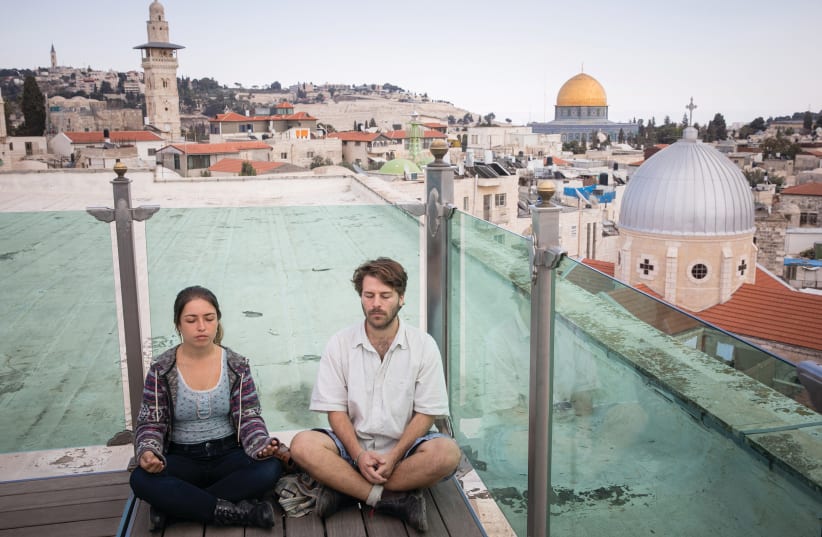This is the exhaustive and highly detailed picture of the city in numbers and figures, depicting new and ongoing trends in the life of the capital and its residents, with a look at the course in the coming years. The picture of Jerusalem it provides cuts across a wide range of topics, including population, employment, education, building and tourism.
The publication is based on major findings from the Central Bureau of Statistics, to which facts and trends coming from the municipality are added, all treated through the special outlook of the Institute’s staff of researchers who closely examine the story behind the figures and trends. With data primarily drawn from 2018, per the custom to look at numbers from about two years before the yearbook’s release, it is interesting to note that it illustrates the end of Nir Barkat’s 10-year term and the beginning of Mayor Moshe Lion’s.
So what happened in Jerusalem during the years in this edition?
There were more women in hi-tech and more tourists than in any other city in Israel, but also a decrease in immigration. Jerusalem continues to be the biggest city in Israel, with 919,400 residents, double that of Tel Aviv and triple that of Haifa. Jerusalem also has the largest Arab population in Israel (349,600 residents). The city is comprised of 37% non-haredi Jews and others, 25% haredim and 38% Arabs.
Despite the usual split between ultra-Orthodox, religious and pluralist, 3% of Jewish Jerusalemites still live in mixed households (couples with different religious levels: religious/secular, secular/haredi, etc.).
Jerusalem still has Israel’s largest education department, with 286,900 pupils. For the first time, the number of students in the state-religious (non-ultra-Orthodox) school system – 31,700 – has surpassed the number of students in the state (non-religious) school stream – 30,800.
In 2018, Jerusalem was less chosen by newcomers for the second year in a row. Jerusalemites also continue to leave the city, but 46% of them didn’t go far and moved to localities within the Jerusalem metropolis. Yet unlike the last few years, 2018 saw a peak in the number of people immigrating to Jerusalem: 12,800 people.
Jerusalemites live long. Some 84,400 residents are over the age of 65, the largest population of elderly people in Israel, but they make up only 9% of Jerusalem’s population (compared to 15% in Tel Aviv and 20% in Haifa).
East Jerusalem
For the first time since 2015, there is a decrease in the annual growth of the Arab population; the gap between the annual growth of the Jewish population and that of the Arab population also continues to lessen. Ten years ago, the gap was 1.9% (Jewish population annual growth 1.0%; Arab 2.9%) but today it is standing at 0.6% (1.8% in contrast with 2.4%).
The number of Arab students rose, with a 25% increase in Arab students at the Hebrew University of Jerusalem; 52% spike in the academic colleges; and an overall 33% increase in city academic institutions.
Until COVID-19, there were extremely low unemployment rates among Arab residents, with working-age male Arab unemployment at 3%, similar to that of Israel, as well as 3% among working-age female Arabs (5% in Israel).
Workforce
There is still a large gap of gender inequality in the workforce, with a 20% wage differential between men and women in Jerusalem, as opposed to 33% in Israel, 32% in Tel Aviv and 35% in Haifa.
The percentage of women working in hi-tech in Jerusalem (5.1%) is still a bit lower than men (7%), whereas in Tel Aviv and Haifa the difference between men and women employees is almost twice as much, with significant growth in participation of haredi women in hi-tech: 10% of hi-tech employees are ultra-Orthodox, 80% of them women.
Jerusalem continues to be the second-biggest financial center in Israel, with 349,000 employees working in the city (9% of all employees in Israel), in contrast to 425,000 in Tel Aviv (11%) and Haifa (5%), where some 16,700 haredi men participate in the workforce. The number of employees coming from Tel Aviv to work in Jerusalem is increasing – while in the past three years there were 2,100 such Tel Aviv-Jerusalem employees, this year there was an increase of 43% to 3,000 employees. The number of Jerusalemites who work in Tel Aviv didn’t increase during 2019.
Tourism
For the first time, Jerusalem surpassed Eilat in the number of hotel rooms (11,100), now the highest in Israel. (A recently approved project will add an additional 500 hotels rooms in the coming year.) At the same time there was a continued rise in tourists staying overnight in Jerusalem hotels in 2018, with 1.26 million for a total of 4.17 million nights.
